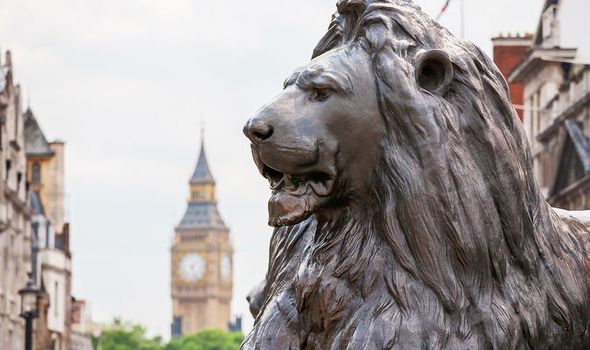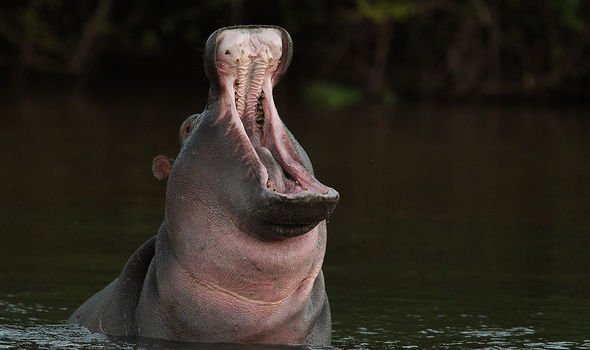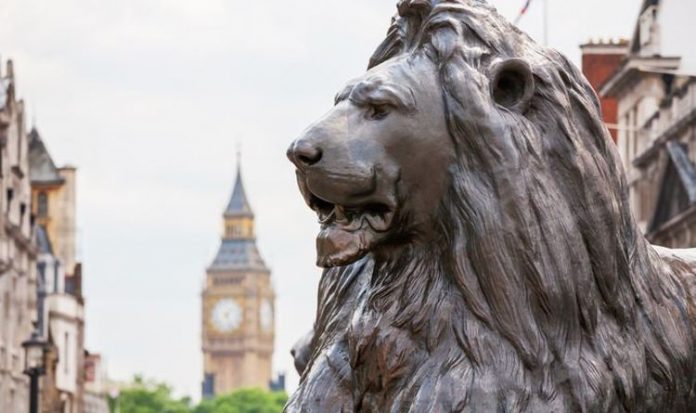Archaeology: Lions used to roam Britain reveals expert
The largest city in England has been a major settlement for almost two millennia – since Londinium was founded by the Romans. But Britain’s history dates back much further than that. Connected to mainland Europe until 8,000 years ago, the landmass has been inhabited by modern humans for around 30,000 years. But travel writer Noo Saro-Wiwa detailed how Britain was actually “forged between 620 million and one billion years ago” during History Hit’s ‘The First Britons’ documentary.
And early evidence of humans in Britain soon followed.
She said “In May 2013, a storm exposed a layer of rock on a beach in Haisborough, Norfolk, that was normally covered by sand.
“Three months later, sand was covering the layer of rock once more, but in the brief time in between, a group of archaeologists found something that looked like a series of footprints.
“We now believe they are around 900,000 years old and belonged to early humans.

The Landseer Lions of Trafalgar Square (Image: GETTY)

Travel writer Noo Saro-Wiwa (Image: HISTORY HIT)
“It’s been suggested that they belonged to homo intercessors – known to have lived in Spain.
“But at this time, Britain was a cold, hostile landscape and whoever these early humans were, they did not stay.”
Experts have found that Britain was a continually changing land over time thanks to the climate.
Ms Saro-Wiwa added: “Lions have often been a symbol of Britain’s might, a fearsome emblem pilfered from the heart of Africa.
“Though the irony is that when you walk past the Landseer Lions in Trafalgar Square know this – Lions once roamed through what is now London.
READ MORE: ‘Oldest footage of London ever’ shows capital’s ‘incredible’ 100-year transformation

Climate change has changed Britain over the years (Image: GETTY)
“When excavation work was going on in the 19th-century, hippopotamus and elephant remains were discovered under Trafalgar Square.
“Wolves and wild cats prowled through prehistoric London, and hippos swam in the Thames.”
At times, conditions were warm enough for these exotic animals, but at others, Britain was gripped by severe cold stages and large ice sheets covered much of the landscape, with little life able to survive in the frozen wilderness beyond.
Ms Saro-Wiwa added: “Between the Ice Ages, Britain was far warmer than it is today and many of these great beasts arrived with these warming temperatures before Britain was cut off from the continent (of Europe) by the formation of the English Channel.
“During the colder periods, other large mammals made Britain home.
DONT MISS
End of the world: How archaeologist discovered ‘real Maayan doomsday’ [VIDEO]
Mayan DISCOVERY: How find in ancient city ‘reveals creation story’ [CLAIM]
Egypt: How ‘greatest archaeological find of all time’ stunned expert [REVEALED]

Lions are said to have roamed Britain (Image: GETTY)
“Woolly Mammoths fossils were found under the Strand, and remnants of Woolly rhinoceroses were uncovered beneath Battersea Power Station.
“But one species that had not made their way back were the Neanderthals.
“There’s a period of about 120,000 years when we have no evidence whatsoever that humans visited Britain.”
Professor Chris Stringer, from the Natural History Museum, explained why these climates were key to human settlements too.
He said: “The notion that human territories expanded and contracted as the environments around them transformed is integral to understanding the story of humans in Europe, and particularly in Britain.

Hippos also swam in the Thames (Image: GETTY)
“Changing environments, underpinned by changing climates, were undoubtedly a major driving force for human dispersals, occupations and abandonments throughout the tumultuous times that would follow.”
Around 60,000 years ago, sea levels dropped as the water froze into ice caps and glaciers, creating a vast grass-covered plain between England and the continent.
A jaw bone found deep in a cave near Torquay on the south coast reveals that within 20,000 years homo sapiens arrive in Britain.
As conditions start to deteriorate about 25,000 years ago, humans disappear from Britain once more, but after a prolonged absence that lasts more than 10,000 years, our species eventually returned and stayed.







